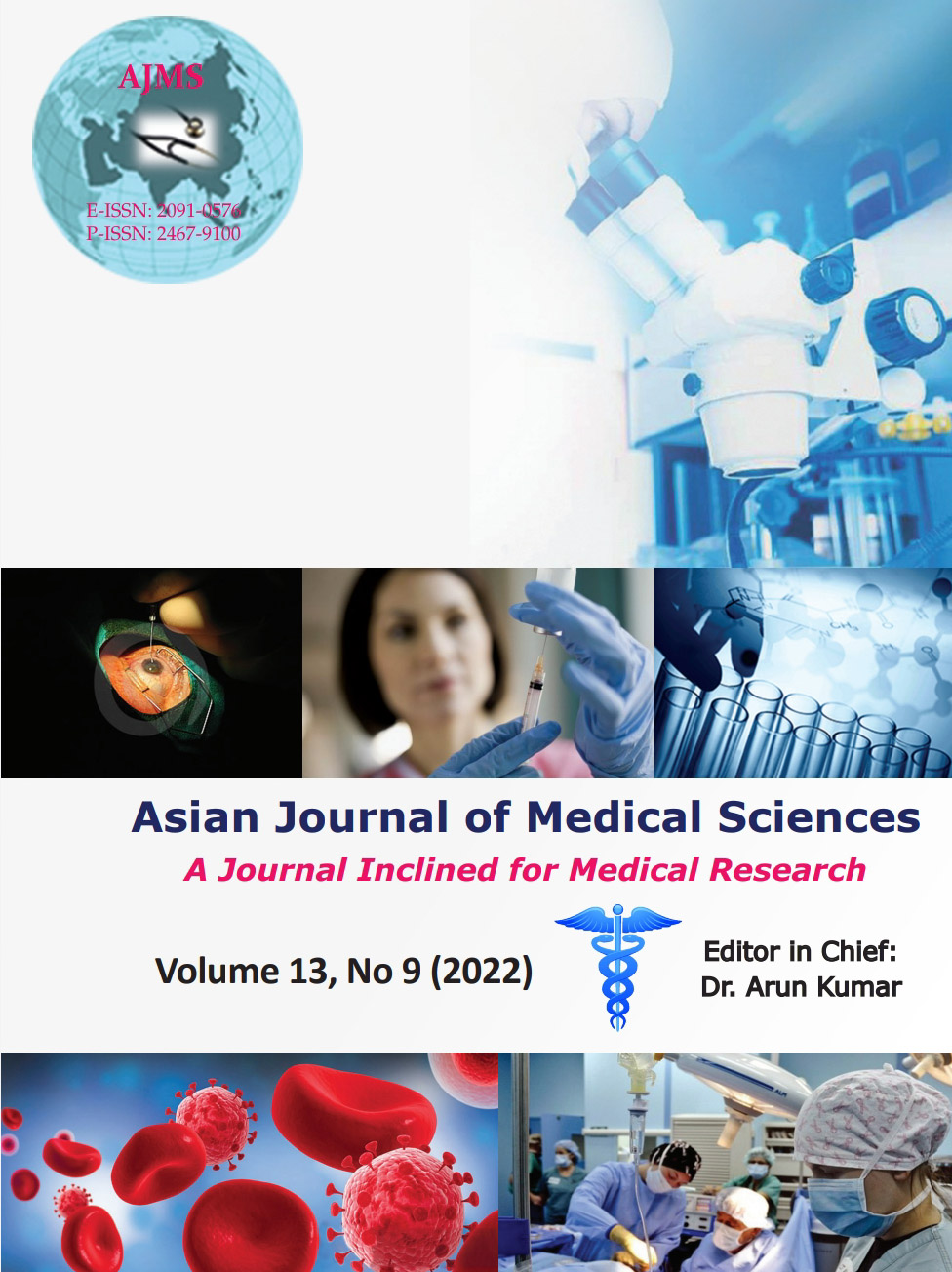Effects of intravenous clonidine on hemodynamics and plasma cortisol level during laparoscopic urological surgeries in a tertiary care hospital
Keywords:
Clonidine; Cortisol; Laparoscopy; Pneumoperitoneum; Stress response; UrosurgeryAbstract
Background: Laparoscopic urologic surgeries causes rise in Blood pressure and heart rate. Maintenance of hemodynamics is an essential part of anaesthetic management.
Aims and Objectives: The aim of the study was to observe the effects of intravenous clonidine on heart rate (HR) and mean arterial pressure (MAP) and plasma cortisol level during laparoscopic surgeries.
Materials and Methods: In this ethical committee approved double-blind prospective interventional study, 50 adult patients of both sexes with ASA I and II were randomly allocated to two groups: Group C (3 mcg/kg Clonidine in 20 ml of Normal saline) and Group P (20 ml Normal saline). HR and MAP were recorded at different time intervals and blood samples were drawn before induction and after reversal from general anesthesia.
Results: In Group P there was a significant increase in variables during intubation, pneumoperitoneum and release of gas from the abdomen (P<0.001). In Group C mean plasma cortisol level increased from 19.36±1.49 (before induction) to 28.60±1.21 (after reversal) and in Group P from 19.33±1.30 to 32.28±1.66.
Conclusion: Clonidine may be a suitable and safe medication to attenuate hemodynamic stress response during laparoscopic surgeries.
Downloads
Downloads
Published
How to Cite
Issue
Section
License
Copyright (c) 2022 Asian Journal of Medical Sciences

This work is licensed under a Creative Commons Attribution-NonCommercial 4.0 International License.
Authors who publish with this journal agree to the following terms:
- The journal holds copyright and publishes the work under a Creative Commons CC-BY-NC license that permits use, distribution and reprduction in any medium, provided the original work is properly cited and is not used for commercial purposes. The journal should be recognised as the original publisher of this work.
- Authors are able to enter into separate, additional contractual arrangements for the non-exclusive distribution of the journal's published version of the work (e.g., post it to an institutional repository or publish it in a book), with an acknowledgement of its initial publication in this journal.
- Authors are permitted and encouraged to post their work online (e.g., in institutional repositories or on their website) prior to and during the submission process, as it can lead to productive exchanges, as well as earlier and greater citation of published work (See The Effect of Open Access).




